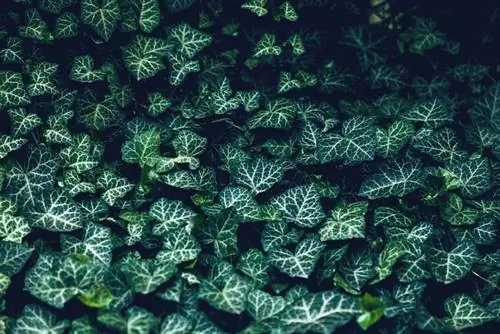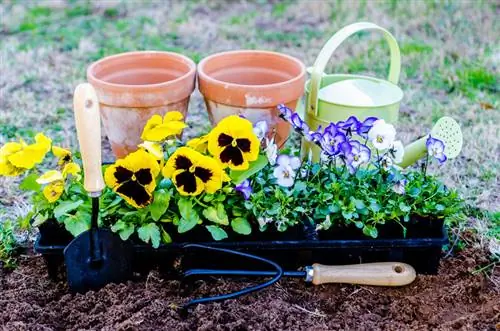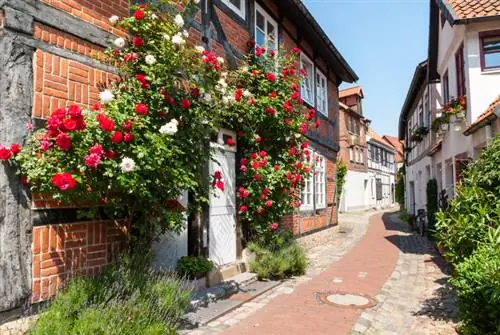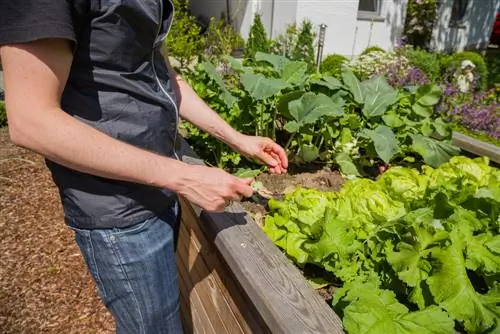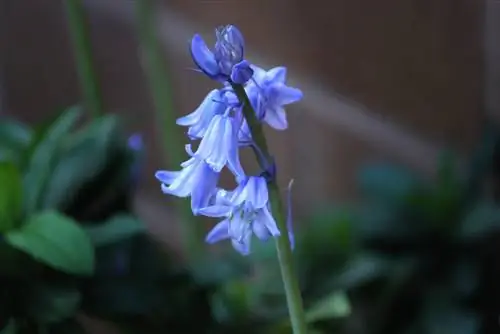- Author admin [email protected].
- Public 2023-12-16 16:46.
- Last modified 2025-01-23 11:20.
Ivy really doesn't need a lot of light. The undemanding climbing plant can even cope with shaded areas. With ivy you can easily green up places in the garden where nothing else grows. But ivy not only thrives in the shade, it also thrives in the sun.
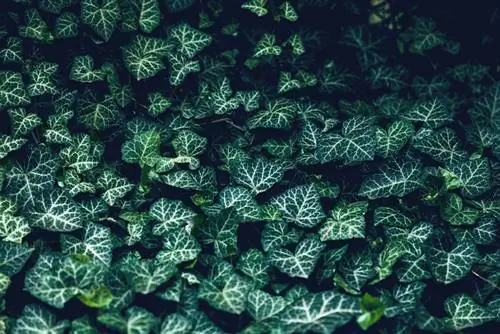
Can ivy grow in shade?
Ivy thrives in both shade and sun. Ivy is ideal for shady garden areas, such as under trees or on shady house walls, as it forms dark green leaves there. However, older forms of ivy prefer sunny locations.
Greening shady areas in the garden
Use ivy to green places in the garden where there is little light, such as
- under trees and bushes
- in shady front gardens
- fences facing north
- shady house walls and walls
In shady locations, the leaves of the ivy remain dark green. The shoots grow long and appear somewhat thinner. However, this only applies to young ivy up to the age of around ten years.
Age form of ivy loves sun
Once the ivy has reached its maturity after about ten years, places directly in the shade are no longer ideal. Now the plant prefers sunny locations.
It is therefore best to plant ivy in semi-shady places where it gets at least a few hours of sun.
Wate little in shaded areas
In shady locations, ivy needs less moisture because it does not evaporate as quickly. The brighter the plant is, the more often you have to water it.
Shady locations in the room
When kept as a houseplant, the ivy likes it to be bright. However, indirect light is ideal, no direct sunlight, even at midday. If the plant is in the flower window, it must be shaded during midday.
You can easily grow ivy in a hanging basket or place it on a shelf in the room. However, if there is too much shade, the shoots become long and thin and fewer leaves appear.
Colorful varieties do not thrive in the shade
An exception are varieties of ivy that have variegated leaves with white or yellow parts. In order for the colors to develop properly, these varieties need around three to four hours of direct sunlight. If they are only in the shade, the colors remain very pale.
Tip
White or very light house walls do not lend themselves well to greenery with ivy. These colors reflect light too much, causing the ivy to turn away from the wall and not form roots. In this case, you should attach a dark trellis.

